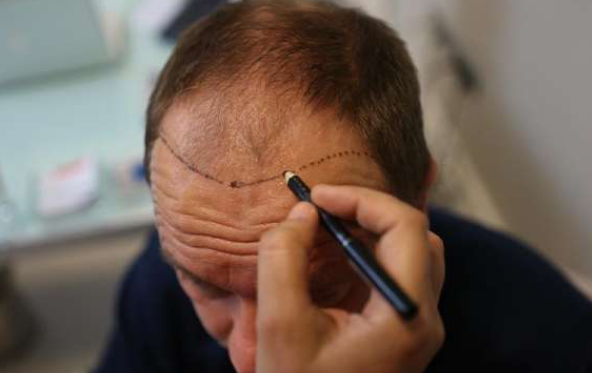Teeth Bonding Unveiled: Your Comprehensive Guide to the Procedure
Our teeth are naturally strong, often serving us well for a lifetime. They enable us to smile, chew, and perform a countless of tasks. However, chipping a tooth is a very common than you may think, and it doesn’t always requires a melodramatic accident. In fact, this can happen while doing everyday tasks, such as opening any bottle with your teeth or cutting into an unexpected hard food or object. Tooth damage can also occur due to factors like tooth decay, teeth grinding (bruxism), or excessive exposure to enamel-eroding acids.
Teeth-bonding is a valuable solution to repair chipped teeth and prevent further damage. But as we know it the right choice for your teeth? Let’s explore the ins and outs of this treatment procedure and help you to make an well informed decision.
What Is Dental Bonding?
Dental bonding, also known as Teeth bonding, is a well-known cosmetic dental procedure designed to repair teeth that are cracked, chipped, or have other minor damage. It can also address issues like discoloured teeth, small teeth gaps in-between, and even increase teeth that are smaller than the rest. The process involves the application of a composite resin that seamlessly blends with the damaged tooth, making it look as good as new.
Unlike crowns or fillings, the composite resin used in tooth bonding closely matches the color of the natural tooth, ensuring a natural appearance post-treatment.
Why Choose Tooth Bonding?
While many people focus on the aesthetic benefits of bonding, repairing chips and cracks is also vital for overall oral health. It aids in proper chewing and prevents further damage that could threaten the surrounding teeth.
Who Is a Good Candidate for Teeth Bonding?
Tooth bonding is most effective for teeth with minor injuries and minimal decay. If you’ve lost a significant portion of a tooth or if the tooth is severely damaged, you may consider a dental implant as a more suitable alternative. Dental implants replace the entire tooth and root with an implant and a porcelain crown.
Teeth bonding are also best suited for individuals who are content with the current color of their teeth. If you’ve been considering teeth whitening, it’s recommended to do so before getting teeth bonding. This is because your dentist selects a bonding material that closely matches the color of your natural teeth. If you whiten your teeth afterward, your natural enamel may lighten, but the bonding material won’t change color.
The Teeth Bonding Procedure: What to Expect
The teeth bonding procedure is typically a straightforward, outpatient process that usually doesn’t require anesthesia unless additional dental work, like fillings, is needed or if there is a need to significantly reshape the tooth. Anesthesia may also be used if the chipped tooth is close to a nerve, as the procedure could potentially affect it.
The process involves the following steps:
Color Selection: Your dentist selects a composite resin color that closely matches your tooth’s shade, ensuring a seamless blend.
Tooth Preparation: The dentist prepares the tooth’s surface by creating a slightly rough texture and applying a bonding agent. This texturing facilitates a strong bond between the tooth and the composite material.
Application of Composite Resin:
The dentist applies the composite resin to the damaged area and expertly sculpts it to restore the tooth’s appearance.
Curing:
The bonding material is then hardened using a special UV light.
Even after the resin has set, adjustments can be made to the shape and appearance to achieve the desired result.
Risks and Aftercare
Dental bonding is a safe and simple procedure with minimal risks involved. Unlike other dental enhancements, such as veneers, there is typically no need to alter or grind down the natural tooth. This means that in the event of damage to the bonded area, it can be easily repaired without concern about the altered appearance of the tooth. Additionally, composite resin is less prone to chipping or breaking compared to veneers and crowns.
To maintain your bonded tooth’s appearance and functionality, it’s essential to follow proper oral care. Avoid habits like chewing on hard objects, ice cubes, or pens. While hard foods and excessive consumption of candies are not recommended for natural teeth either, they should be particularly avoided if you have a history of chipped or broken teeth.
It’s worth noting that the resin used in teeth bonding is more susceptible to staining compared to natural enamel. If you regularly consume staining beverages like coffee or red wine or if you smoke, you are more likely to experience long-term discoloration. Unlike natural enamel, composite resin cannot be whitened. So if staining occurs, you may need to consider replacement or an alternative such as veneers.
While teeth whitening can be done alongside bonding, the process can be unpredictable in achieving uniform color. Therefore, it’s often advisable to whiten your teeth before bonding, particularly if you are considering bonding for one of your front teeth. Otherwise, changes in tooth color due to whitening could leave you wanting to replace the bonding material entirely.
Are You Ready to Perfect Your Smile?
If you’re looking to repair minor dental imperfections and restore your smile, teeth bonding is a painless, long-lasting solution that can be completed in just one dental appointment. This procedure is most suitable for individuals with healthy teeth that have sustained minor damage or trauma.
If you’ve always wished to whiten your teeth, discuss teeth whitening with your dentist before opting for teeth bonding, as the bonding material color closely matches your current tooth shade.
Are you ready to perfect your smile? Reach out to explore cosmetic dentistry services for affordable teeth bonding cost in London, UK and discover how teeth bonding can transform your smile and boost your confidence. Call our Smile Clinic London Invisalign Provider for more information on dental bonding costs and what it includes.






![eHospital: Features, Reviews and Alternatives [2024]](https://webenterpreneurs.com/wp-content/uploads/2023/07/eHospital-768x432.png)